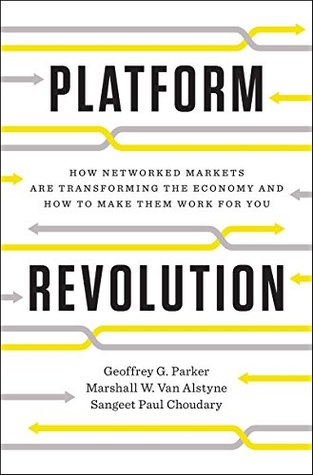More on this book
Community
Kindle Notes & Highlights
Read between
June 5 - July 5, 2022
In business, no victory is permanent—but on occasion, a particular firm is capable of enjoying a dominant position within its industry for a decade or longer. When this happens, we can say that the company has maintained a sustained advantage. This happens most often in a winner-take-all market. This is a market in which specific forces conspire to encourage users to gravitate toward one platform and to abandon others. The four forces that most often characterize winner-take-all markets are supply economies of scale, strong network effects, high multihoming or switching costs, and lack of
...more
Somewhat comparable to multihoming costs are switching costs—the costs associated with leaving one platform and moving to another. Again, these costs may be monetary (such as the penalty assessed when a cell phone user switches service providers in mid-contract) or non-monetary (such as the inconvenience of moving all your family photos from one web hosting service to another).
In markets where multihoming and switching costs are low, late entrants can gain market share more easily, leading to markets that are more open and fluid.
The emergence of the world of platforms is giving rise to an increasingly important social challenge: the need to design balanced internal governance systems and external regulatory regimes to ensure they operate fairly.
A recurring economic problem is when the cost of negative externalities is borne not by the people or companies that created them but by “innocent bystanders” who are stuck with the problem.
Platforms certainly create benefits for their users—if they didn’t, they wouldn’t be exploding in popularity. But they also create unintended side effects, including negative externalities, that society as a whole must consider and address.
Ronald Coase and George Stigler, members of the famous laissez-faire-oriented Chicago School of economics, argue that the vast majority of market failures are best addressed by market mechanisms themselves—for example, by encouraging the free growth of competitors who provide goods and services that produce greater social benefits than their rivals.
When governments are relatively unchecked by their citizens, strong regulation often leads to high levels of corruption and expropriation by government officials.
A complete absence of regulation is likely to produce high social and economic costs through the persistence of problems like business fraud, unfair competition, monopolistic and oligopolistic practices, and market manipulation. On the other hand, the most extreme level of government intervention into markets, as seen in some totalitarian countries, leads to other problems, including corruption, inefficiency, waste, and lack of innovation. Usually the existence of such tradeoffs implies that an intermediate solution is best, and indeed the world’s most vibrant economies have typically employed
...more
• Security: using platform-based networks to protect industrial assets from attacks • Network: designing, building, and servicing the networks that will link and control industrial tools • Connected services: developing software and systems to manage the new networks • Product as a service: transitioning industrial companies from selling machines and tools to selling services facilitated by platform connections • Payments: implementing new ways to create and capture value from industrial equipment • Retrofits: equipping the $6.8 trillion worth of existing industrial machinery
...more


